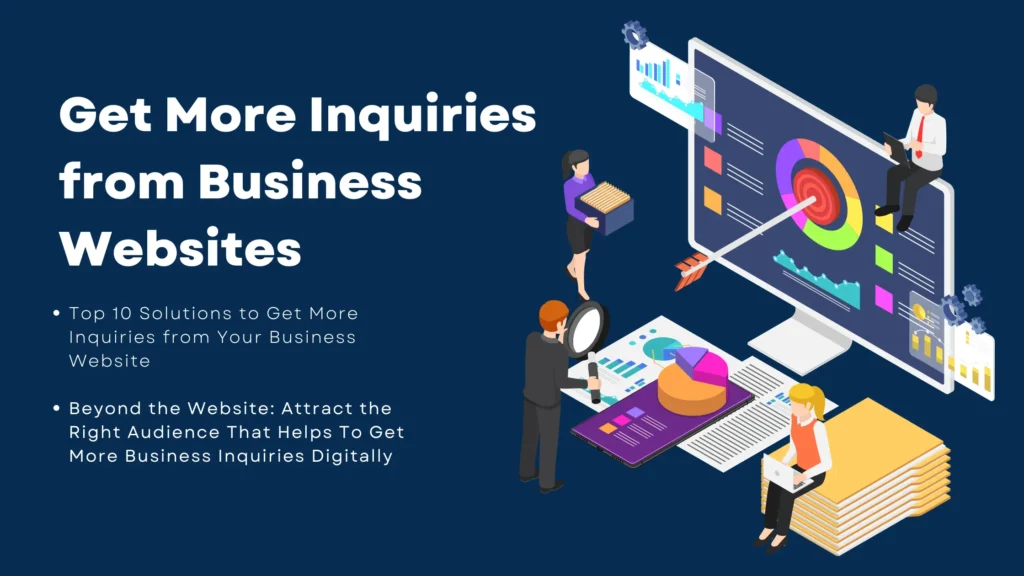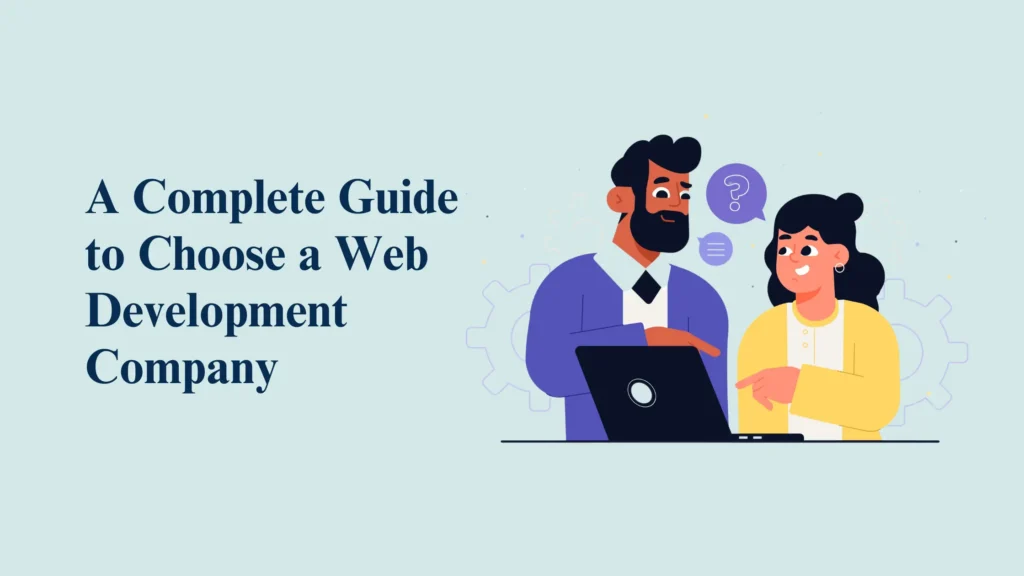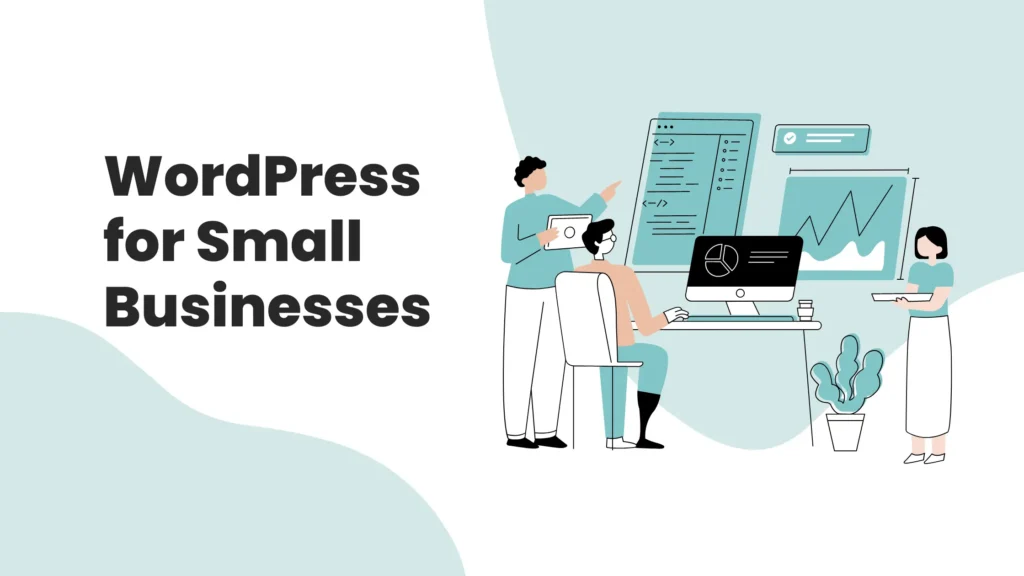How Do You Get More Inquiries from Your Business Website?
Did you know that 95% of people who visit a website leave without contacting the business? Having a good website is important, but it’s not enough if people aren’t reaching out to you. Getting inquiries from your website is essential because they can turn leads into sales and customers. Many businesses struggle with this, even if their website looks nice and has good information. Top 10 Solutions to Get More Inquiries from Your Business Website 1. Enhance Calls to Action (CTAs) Clear and Action-Oriented CTAs: Ensure every page has a CTA that clearly directs visitors to what to do next. Use strong, action-oriented language like “Contact Us Now,” “Get Your Free Quote,” “Buy Now,” or “Schedule a Consultation.” Strategic Placement: Place CTAs where they are easily visible and likely to be clicked. Common locations include the top of the page, in the sidebar, and at the end of blog posts or service descriptions. Ensure that CTAs are accessible without needing to scroll excessively. Design for Visibility: Use contrasting colors and bold fonts to make CTAs stand out from the rest of the content. Buttons often perform better than text links, as they are more eye-catching and easier to click on. 2. Offer Multiple Contact Options On The Website That Generate More Inquiries from Your Business Website Variety of Contact Methods: Provide several ways for visitors to reach you. This can include phone numbers, email addresses, contact forms, live chat, WhatsApp messaging, scheduling a meeting, and social media messaging options. Different visitors have different preferences, so offering multiple methods ensures you cater to a broader audience. Easy Accessibility: Make sure contact information is easy to find on every page. Place contact details in the header and footer, and consider a dedicated “Contact Us” page linked from the main navigation menu. User-Friendly Forms: Design contact forms to be simple and straightforward, asking only for essential information. Too many fields can deter users from completing the form. 3. Create Compelling Content to Get More Inquiries from Your Business Website Audience-Centric Content: Tailor your content to address the specific needs, interests, and pain points of your target audience. Conduct research to understand what your audience is looking for and create content that speaks directly to them. Engaging and Valuable Information: Use clear, concise language and aim to provide real value. Incorporate storytelling, high-quality images, infographics, and videos to make the content more engaging and informative. Regular Updates: Keep your content fresh by regularly adding new blog posts, articles, case studies, and testimonials. This not only engages visitors but also signals to search engines that your site is active, potentially improving your SEO {seo engine optimization}. Blogging on the Business Website: Consistency: Regularly updating your blog keeps your website fresh and encourages visitors to return and become loyal customers. Topics: Choose blog topics that are relevant to your audience’s pain points and interests. Consider industry trends, frequently asked questions and how-to guides that provide value to your readers. Showcase the Case Studies: Present your case studies and testimonials in a compelling narrative format. Focus on the challenges your clients faced, the solutions you provided, and the results achieved. Use real-life examples to make the stories relatable and engaging. Create Video Content for the Business Website: Engagement: Video is a powerful tool for engaging visitors. It allows you to convey information in a more dynamic and memorable way than text alone. Videos can be used for product demonstrations, tutorials, and customer testimonials. Types: Consider different types of video content, such as explainer videos, behind-the-scenes footage, or customer testimonials. Use videos to showcase your products or services in action and to humanize your brand. Lead Magnets: Definition: Lead magnets are incentives that you offer to visitors in exchange for their contact information. They are designed to attract potential customers and convert them into leads. Lead magnets can include eBooks, whitepapers, checklists, and free trials. Examples: Provide valuable content that addresses specific pain points or solves a problem for your target audience. For example, an eBook that offers tips on home buying for a real estate website or a checklist for starting a small business for a financial services company. 4. Improve Your Business Website Usability Optimize Loading Speed: Use tools like Google PageSpeed Insights to identify and fix issues slowing down your site. Compress images, enable browser caching, and consider using a Content Delivery Network (CDN) to enhance loading times. Easy Navigation: Simplify your site’s navigation to ensure it is user-friendly. Use a logical menu structure with clear, descriptive labels. Include a search function to help users find information quickly. Mobile Optimization: Ensure your website is mobile-responsive. Test it on various devices and screen sizes to ensure a seamless experience for mobile users. A mobile-friendly design is crucial as more users access websites via smartphones and tablets. 5. Build Trust with Social Proof to Get More Inquiries from Your Business Website Showcase Testimonials and Reviews: Display customer testimonials and reviews prominently on your website. Use real names and photos when possible to enhance authenticity and credibility. Highlight Security and Credibility: Display trust badges such as SSL certificates, industry awards, and affiliations. This reassures visitors that their information is secure and that your business is reputable. Professional Website Design: Invest in a clean, professional, and visually appealing website design. High-quality images, well-crafted content, and a polished look can significantly boost credibility and trust among visitors. 6. Clarify Your Business Value Proposition On The Website Communicate Your Message Clearly: Ensure that your website’s main message is immediately clear to visitors. Use straightforward and concise language to describe what your business offers and how it benefits them. This can be done through headlines, subheadings, and introductory texts that briefly explain your value proposition. Highlight Benefits Over Features: While features describe what your product or service does, benefits explain how it improves the user’s life or solves their problems. Emphasize the positive outcomes and unique advantages your offerings provide, making it easy for visitors to understand why they should choose you. 7.
How Do You Get More Inquiries from Your Business Website? Read More »
Blog, Digital Marketing, PPC, SEO, Web Development






